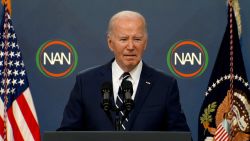The 2018 election will be all about Donald Trump.
Everything we know about midterm voters – including that there will be less of them and they’ll hail more from the parties’ bases than in a presidential cycle – means that the Trump factor will be on their minds at the polls.
“Both of these sides have been waiting for this moment since January 2017,” professor of history and public affairs at Princeton University (and CNN contributor) Julian Zelizer told me about this year’s midterm voters. “These are people who have been encouraged or most aggravated by what’s happening in the news.”
Because of that, for campaigns this year (and increasingly over the last few cycles) it’s less about how to win voters over, but how to get the ones you want to the polls. Case in point: Trump’s hard pivot to the immigration issue in the last week of the election in an attempt to rile up Republican voters.
Like what you're reading?
“It’s clear he’s trying to activate his base,” UNI political science professor Chris Larimer told me this week.
But will that strategy activate his base, or encourage those who dislike him?
At least nationally, we have a picture of just how polarized voters are on Trump, thanks to polling from CNN and SSRS earlier this month. Among Democrats, 92% disapprove of Trump – while 87% of Republicans approve of the President.
In key states like Florida, Arizona, Nevada and Georgia on Election Day, the difference will ultimately come down to which side is bigger – and who makes it to the polls.
The Point: This is voters’ first – and biggest – chance to send a message to Trump. Will they tell him “job well done,” or that there’s trouble ahead?


















